|
| 
During the restoration process, the name of LCDR. Terry Appelgate showed on the canopy edge of the cockpit. Although more pilots flew 150683, his name is the last painted on it before retirement. Below several pictures from Terry while flying the F-8 with VF-211, VF-11 and VF-24.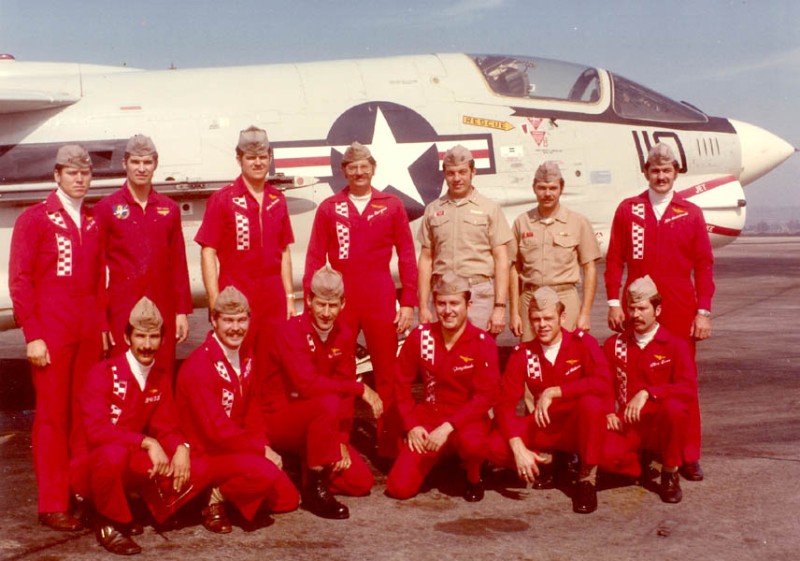
Above, last F-8 cruise for VF-211, USS Hancock, 1975. 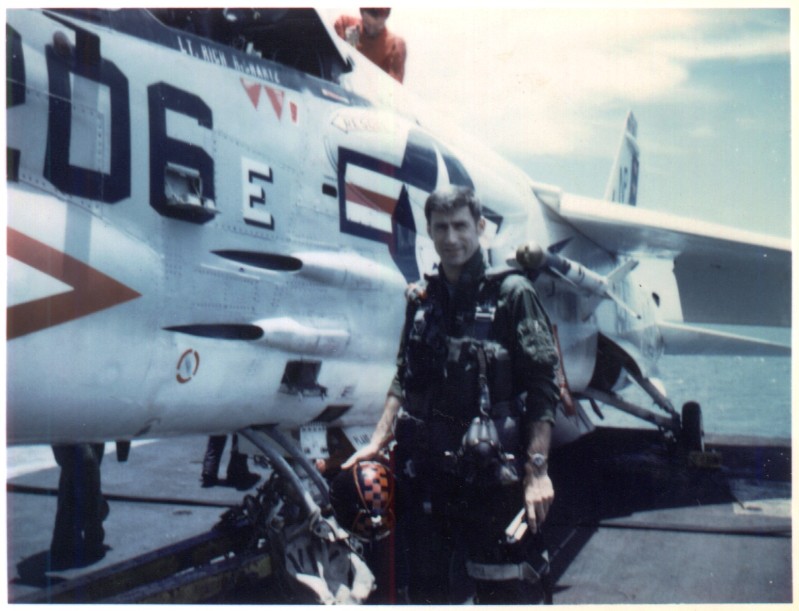
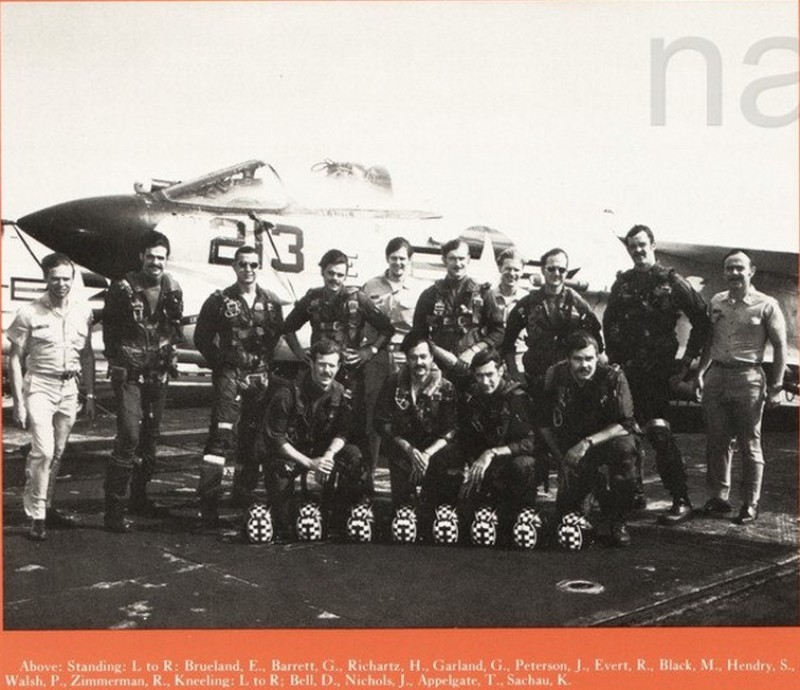
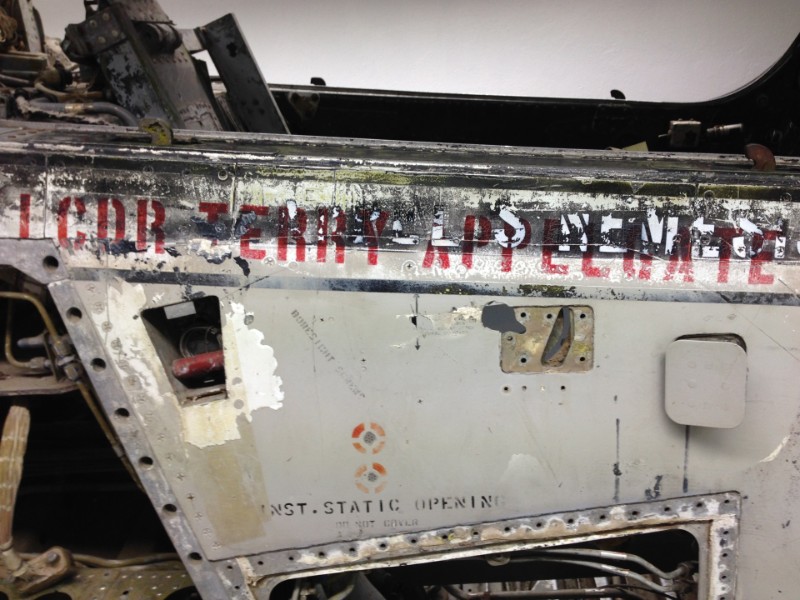
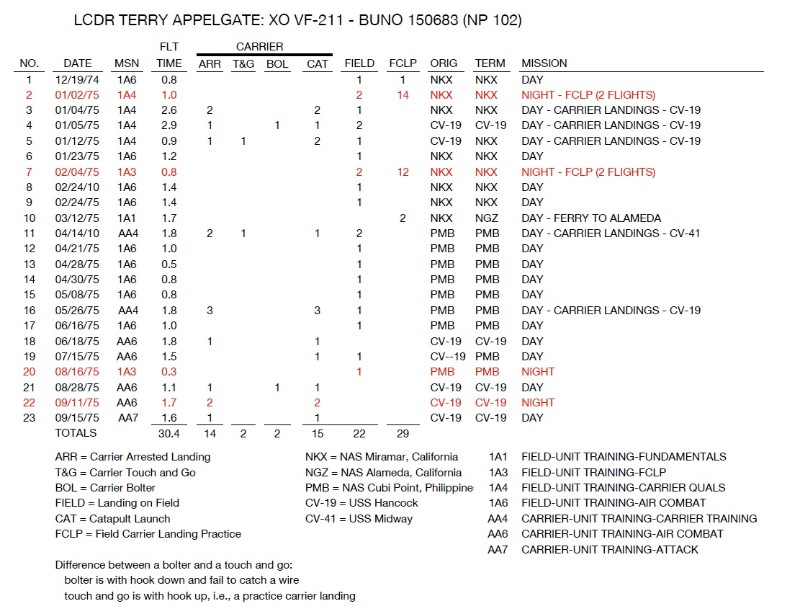
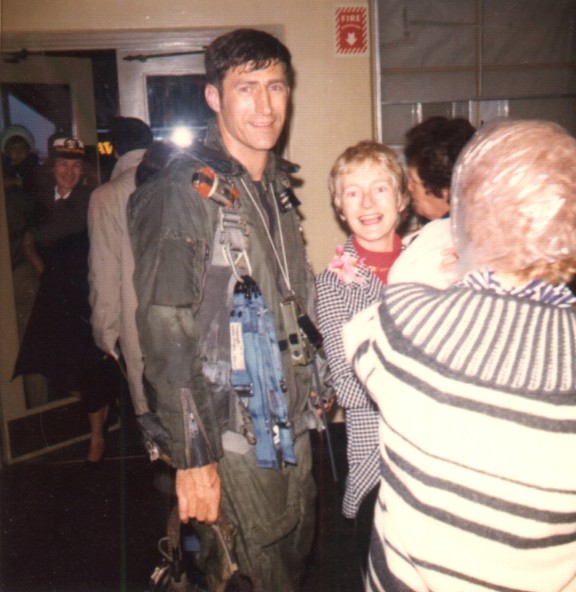
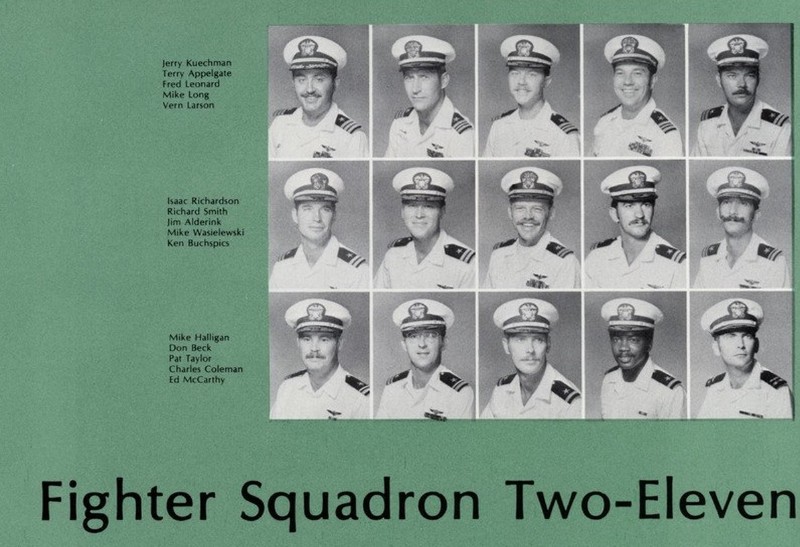
In 1964, Terry flew with VF-111 on board USS Kitty Hawk. As seen on this F-8 (modex 111) his name has been written as "APPLEGATE"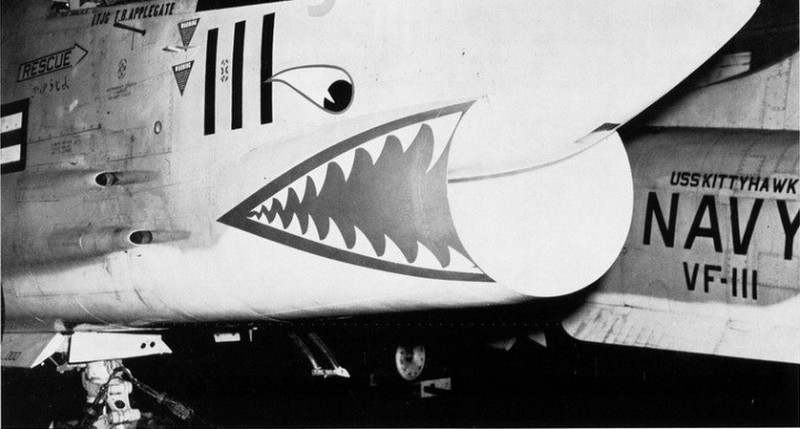
Below Terry seen in the cockpit of F-8D 148647 / NE-453 VF-111 aboard CVA-41 USS Midway circa 1965. Also note the two Zuni rockets.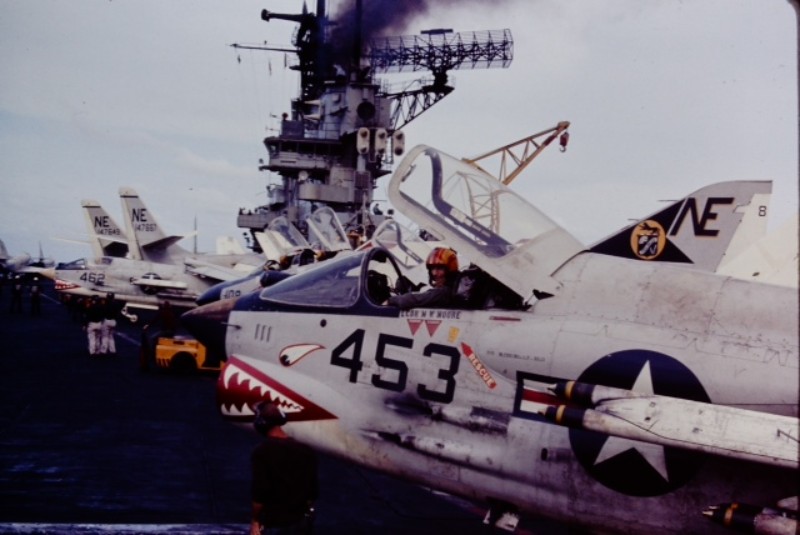
During his cruise in 1973 with VF-24, Terry had to eject F-8J 150340 NP-204 on June 9th. He managed to do so without any injuries, here is his story:
I was in VF-24 aboard Hancock for my second cruise and the ship was operating a hundred miles off the coast of the Philippines. I was scheduled for a strafing hop to Scarborough Shoals about 175 miles from Cubi Point. The CO, John “Pirate” Nichols, was the flight leader and I was the section leader with Dick “Kosak” Evert as my wingman.
All was proceeding well as we set up a daisy chain and strafed an old ship hulk that had long ago gone aground on the shoal. Dick called me and said he wanted to join up to check some fluid was venting from the underside of my plane. He said it looked like fuel and suggested we start back to the ship. I could soon tell it was fuel venting because my gas gauge was going down faster than normal. Pirate called the ship,told them of my problem, and requested a ready deck so I could land quickly. We talked among ourselves about the procedures to follow for this emergency. The F-8 was peculiar in that it had a long intake duct and at landing configuration transition airspeed there was a reverse flow of air around the engine. This was especially a problem in my case because there was so much unrestrained fuel in the engine compartment.When we got back to the ship the deck was ready and the helo was watching for me. I entered the landing pattern high, wide, and fast. My intention was to transition to the landing configuration as quickly as possible in order to minimize the chance that the extra fuel flowing around the engine would cause the engine to flame out. I was jerking the plane around and trying to get the wing up and the wheels down when it got REAL QUIET! Time for plan B, I went through the engine restart procedures several times but the engine would not start. During this high stress time I seemed to enter a period of expanded time - everything was very distinct and events seemed to take forever. Out of my peripheral vision I noticed that I was seeing the horizon out the top of the canopy instead of straight ahead out the windscreen - the plane was losing airspeed and nosing over towards the ocean. The engine was not started, I was about 800 feet above the ocean, and I knew it was time to get out. I pulled the face curtain and the ejection sequence took place just like in training. The parachute opened just like advertised, I swung a couple times, and I was in the water before I had a chance to think about it. I had my mask on tight and left it on as I submerged in the ocean so I could breath under water (poor man’s scuba). I have no idea how deep I went down, but I can remember being under water and seeing light above me. When I bobbed to the surface the helo was approaching with a swimmer ready to jump in to assist me. He was on me quickly and got me clear of the numerous parachute cords that were wrapped around and tangled on my survival vest (this is a major problem in over water ejections because the parachute sinks very rapidly and will pull you down like an anchor). The helo quickly lowered the hoist and were up and into the helo in no time. The whole evolution was just like the training I had been through in San Diego Bay prior to cruise. My pick-up was so quick that I was back in the ready room before the rest of my flight. Many guys get banged up when they eject, but I only had a small rub on my neck where the parachute riser had scraped my neck as the parachute deployed from its container. I have forever accused Dick of shooting me down much to his chagrin.According to Terry: "I was number 4035 to succesfully eject and the 5856th member of the Martin Baker Ejection Tie Club". 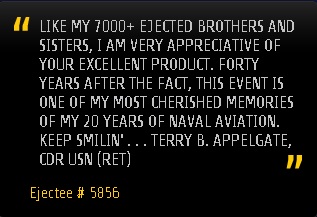
Terry (with moustache) seen here with fellow F-8 ejectees, top row marked with number 6.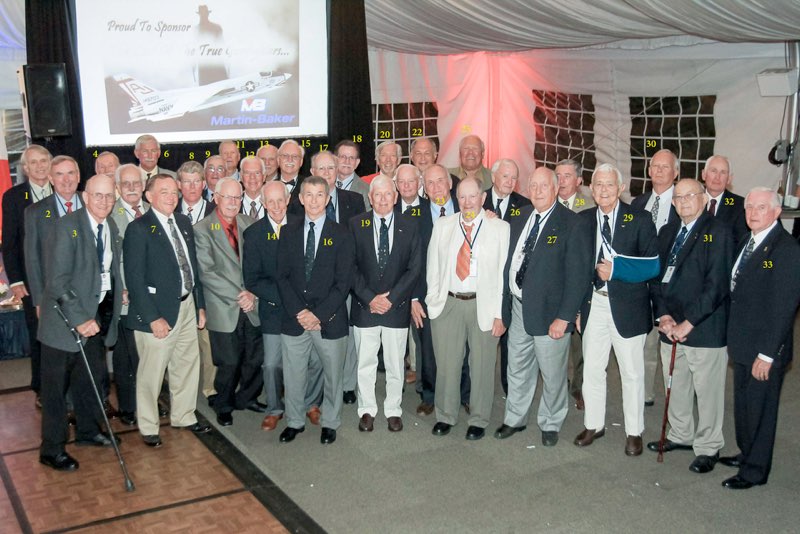
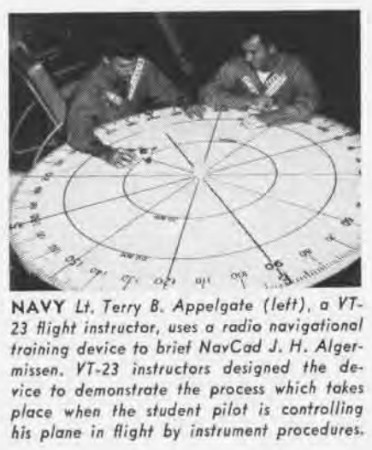
Terry as an instructor pilot with VT-23 in 1967 flying the Grumman TF-9J Cougar.
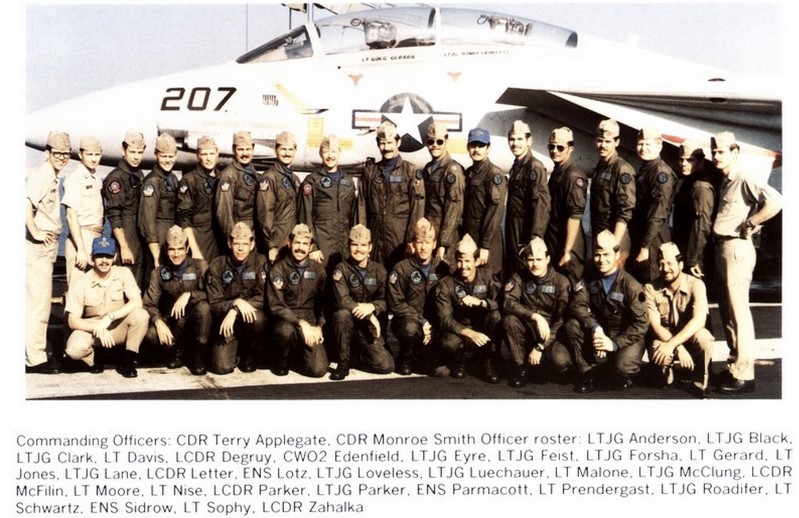
As seen above, Terry also flew the mighty Tomcat with VF-213. |
 |
|
|